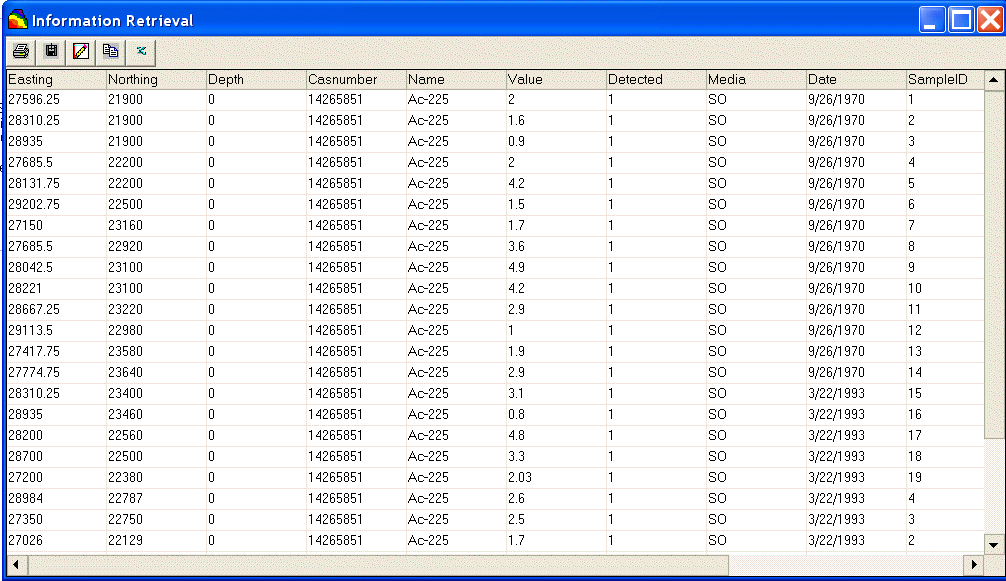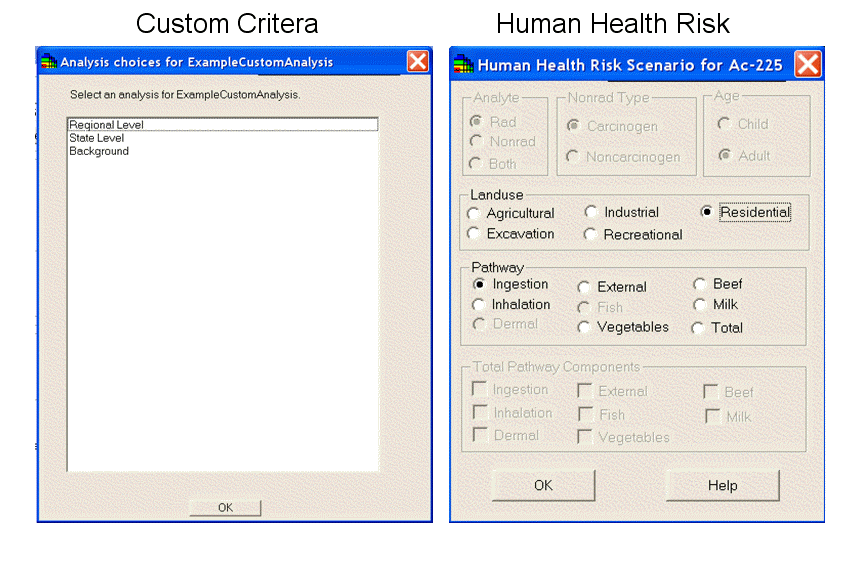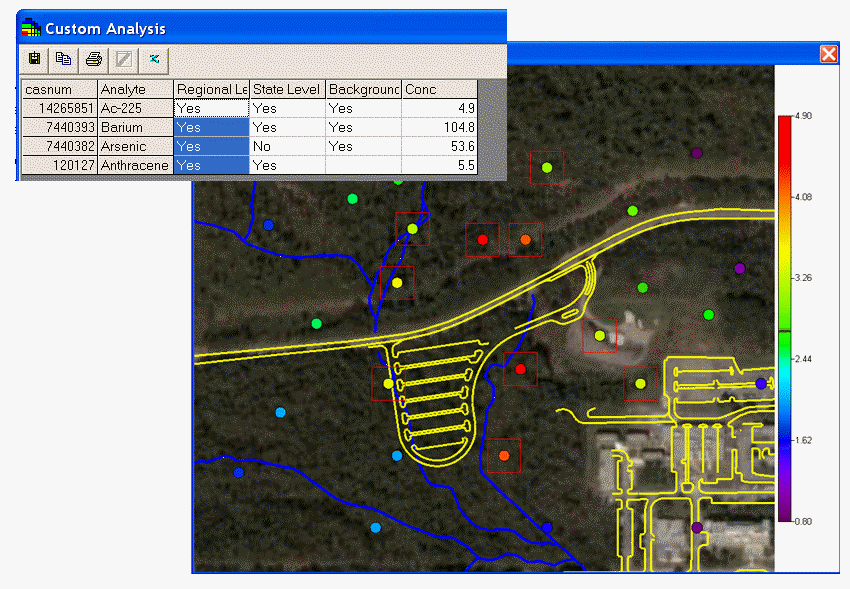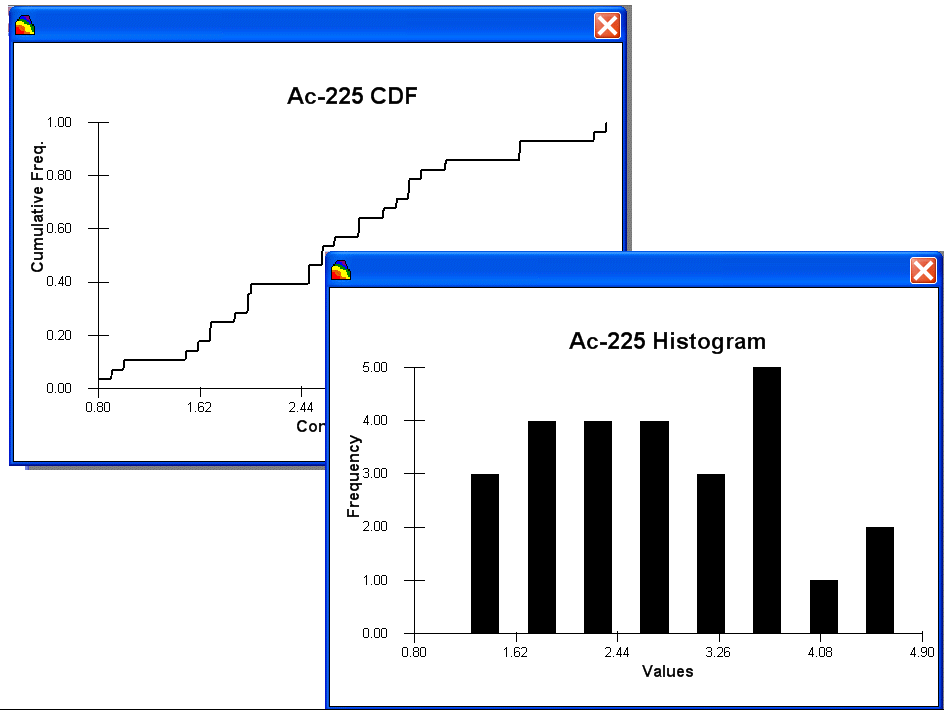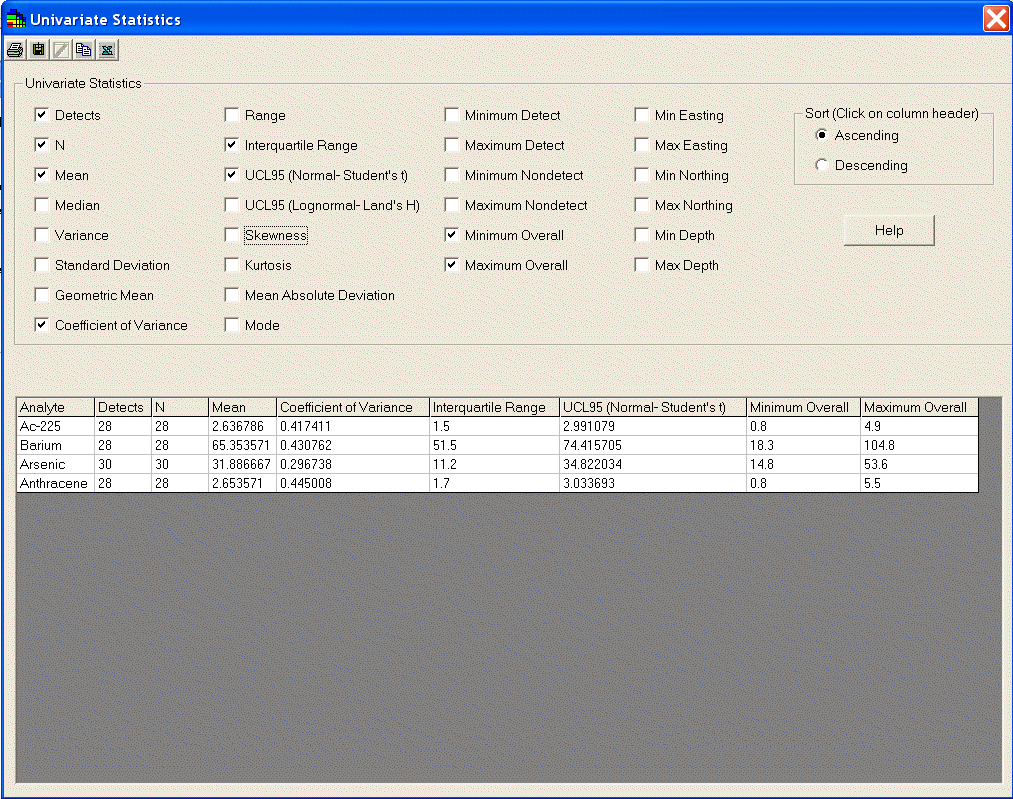

|
SADA Main Page
Free Downloads
Visualization
Sampling
Data Exploration
Risk Assessment
Geospatial Analysis
Geospatial Simulation
Decision Analysis
Cost Benefit Anaylsis
MARSSIM
TRIAD
Other Tools
Technical Support
Documentation
Coming Soon
Training
Education
Applications
Join SADA User Group
RAIS
Bugs
People
Email Us
Current SADA Webpage Vistors Previous SADA Webpage Visitors 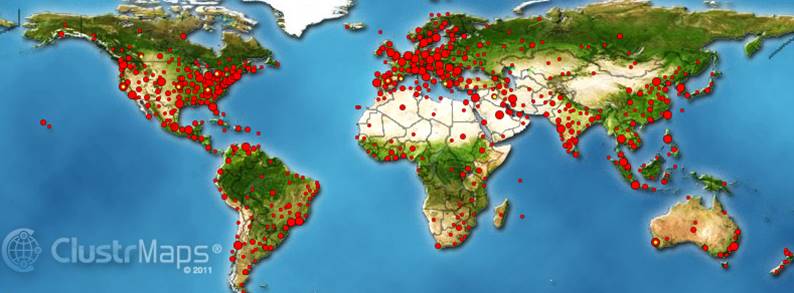 |
Spatial Analysis and Decision Assistance
|
Data ExplorationOften an early step in any investigation is an exploration of the raw data values. SADA provides many tools that allow you to visualize your data, perform data screens, spatially aggregate data, calculate basic statistics, perform hypothesis tests, query by date, and so forth. The following catalog some standard tools.Data QueryYou have a great deal of control over how your raw data is processed. SADA has means to query by date, to deal with non-detected values, and to deal with duplicate data values. Spatially linked tabular queries are also possible.
Data ScreensA data screen essentially compares sampled data values against a threshold or screening limit. Screening limits are typically contaminant specific. SADA allows you to access threshold limits in three different ways: import your own screening limits, access a database of ecological benchmarks (shipped with SADA), or utilize the comprehensive human health model (includes toxicological and scenario parameter databases shipped with SADA). SADA also permits you to specify depth specific screening values. This can be useful as acceptable limits may actually vary as a function of depth below the surface.
Data screens can be carried out spatially or with a more traditional tabular output. In the tabular output, each contaminant essentially receives a "Yes" if any value exceeds the criteria. Multiple contaminants can be screened at once. In a spatial screen, individual sample points are highlighted with exceedance boxes to show where the exceedances occur. This is a very easy and very powerful way to quickly visualize the location and pattern of elevated values.
Data Ratios/Sum of FractionsRatio values serve a similar role to data screens and can be conducted tabularly or spatially. In a ratio calculation, the representative concentration is divided by the screening or decision criteria. Values greater than one indicate an exceedance. Ratio values provide more information than a simple screen as the value of the ratio can indicate the severity of the exceedance.Sum of fraction maps sum up the ratio values over each contaminant in the tabular format and at each sample location for the spatial map format. Sum of fractions are often used in radiological assessments where summing ratios does have a physical and real meaning. Sums greater than one indicate that contaminants, taken together, are exceeding a collective criteria. Histograms/Cumulative Distribution PlotsHistograms and CDF plots are good ways to see the distribution of your data set. These plots aid in model selection, the identification of outliers, and so forth.
Summary StatisticsSummary statistics for the entire data set or a subset of the data can be extracted. Here we show summary statistics for the data points defined using the polygon feature in the previous figure. Summary statistics can be exported as delimited files for import into spreadsheet or wordprocessor programs. Other statistics that are available include the range, detection frequency, maximum and minimum detected and non-detected values, and back transformed mean, variance, and UCL95.
Hypothesis TestingA statistical test is a procedure for deciding whether a hypothesis about a quantitative feature of a population is true or false. These tests are used to determine the statistical significance of a result. Statistical tests separate significant effects from mere luck or random chance. SADA currently implements two non-parametric tests used by the DQO and MARSSIM processes: sign test vs. decision criteria and Wilcoxon rank sum comparison test. |
SADA Main Page Free Downloads Visualization Sampling Data Exploration Risk Assessment Geospatial Analysis Geospatial Simulation Decision Analysis Cost Benefit Anaylsis MARSSIM TRIAD Other Tools Technical Support Documentation Coming Soon Training Education Applications Join SADA User Group RAIS Bugs People Email Us

